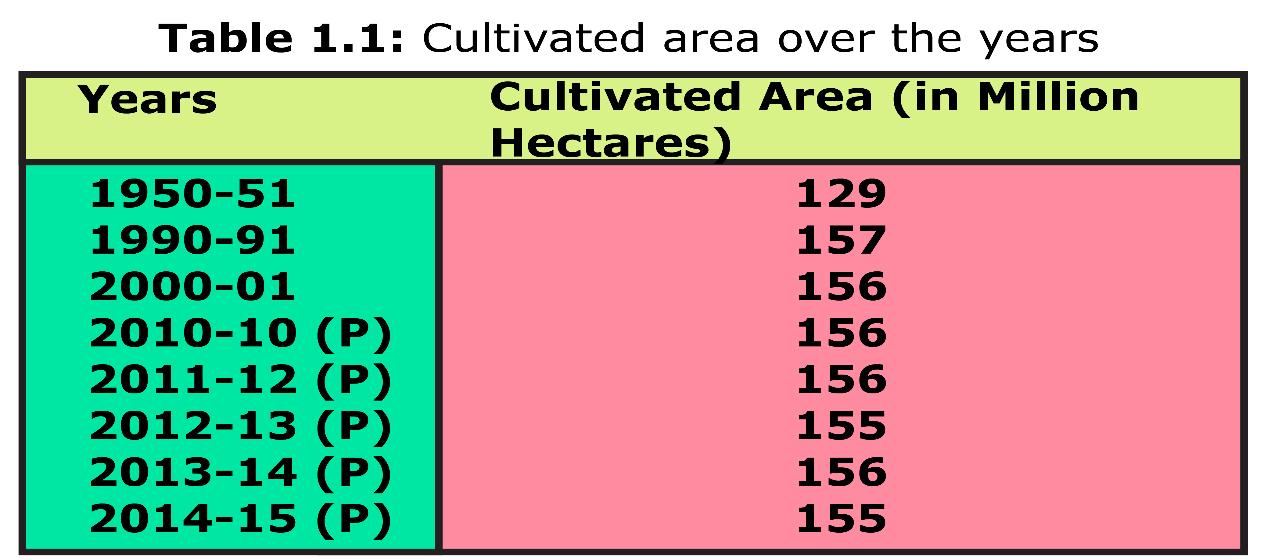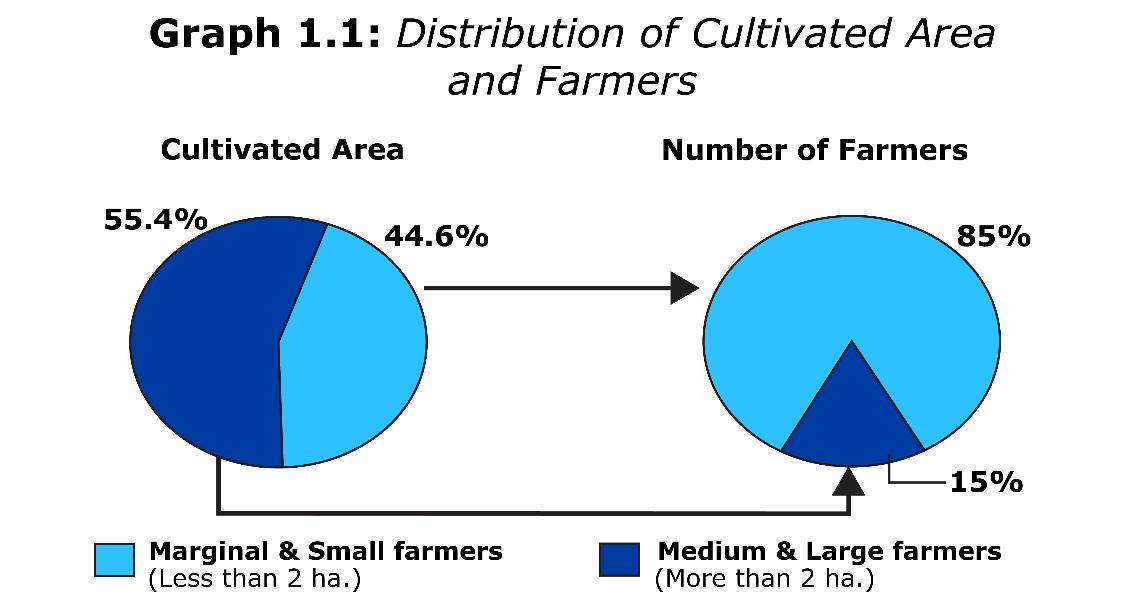The purpose of this is to establish few basic concepts relating to production, through the story of village Palampur.
Production: It is a process that is aimed to produce the goods and services that we want. There are four factors of production:
- Land and other natural assets such as water, forests and minerals
- Labour: These are the people who will do the work
- Physical capital: The variety of inputs needed at every stage in the course of production
- Human Capital: For example, Knowledge and enterprise
Human capital, land, labour and physical capital are put together to produce an output.
Various production activities in Palampur
Farming Activities:
Farming is the main production activity in rural India, but the major constraint being that the land under cultivation is almost fixed (almost stagnant since 1960).

Different types of methods to increase yield:
- Multiple cropping: Planting more than one crop on a piece of land during the year (For example, Rabi crops during winters and Kharif crops during the rainy season).
- The yield has increased by using modern techniques in farming. (measured as a crop grown on a given piece of land in a single season). High-yielding varieties (HYVs) of seeds were introduced by the Green Revolution in the late 1960s. As an outcome of which, the yield increased.
Problems with farming:
- Loss of the fertility of soil because of increased utilization of chemical fertilisers.
- When groundwater for tube well irrigation is used regularly it leads to the exhaustion of the water table.
- Unequal Land distribution, as many families, are landless, and most others cultivate small plots of land lesser than 2 hectares, which does not bring enough income for the family.

- Lower wages of hired labourers than the minimum wages set by the government due to intense competition for work.
- High rate of interest on loans taken by small farmers for capital needs.
Conclusion
Production activities are the main pillar for economic development. For the rural areas main production activity is agriculture and for the Urban areas industries and service sector are the main production activities. In rural areas farming activity evolved through the time and produced more crops to increase the agricultural output which further contributed to the economy of a nation. The major achievement is to increase agriculture production without increasing the land resource. So the investment in the technology to improve agricultural practices results in an increase in the agricultural productivity per acre of land. The technology needs money or capital, hence medium and large farmers can arrange the capital to invest in the technology to improve productivity but problems persist with the small farmers. Many government initiatives such as PM Kisan Kalyan Yojna helps the small farmers to get the capital to invest in the technology to improve the farm productivity at small fields. Second factor is the labour which is abundant at the lower level, but the skill development at the labour level needed to add factors in productivity improvement. Government initiatives such as Kisan Seva Kendra, helps farmers to improve their skills. Other types of activities practiced at village level are non-production activities such as dairy, jaggery production, textile industry etc. Nowadays non-farming activities are increased at rural level due to increase in the connectivity, IT infrastructure, Road transport, development etc. So more opportunities are waiting for rural people to contribute to the economy of the nation.
 Profile
Profile Settings
Settings Refer your friends
Refer your friends Sign out
Sign out













